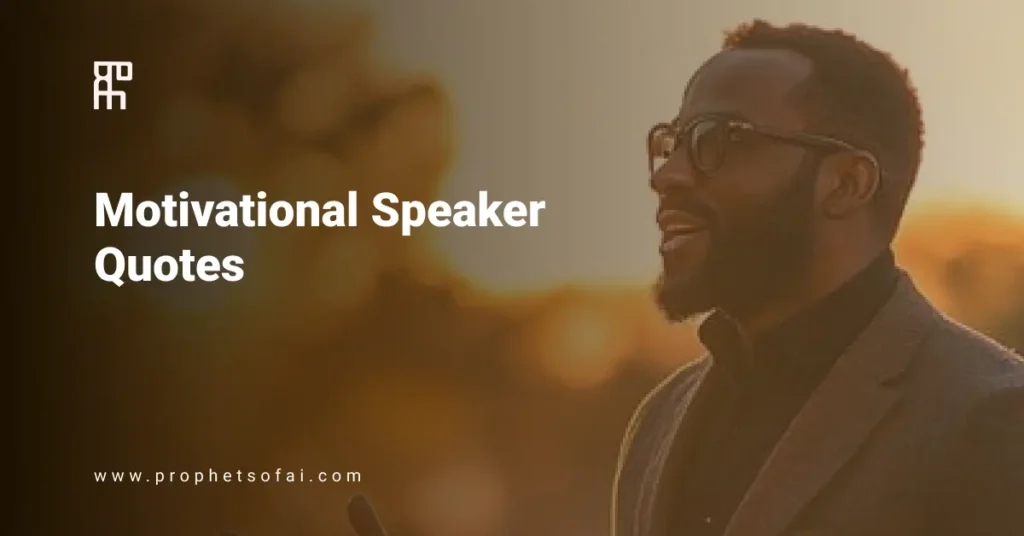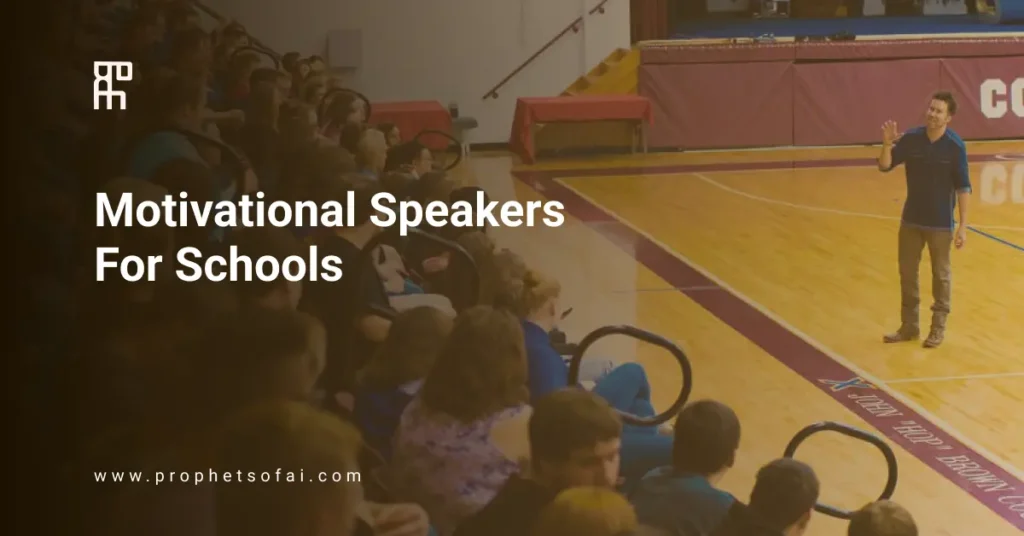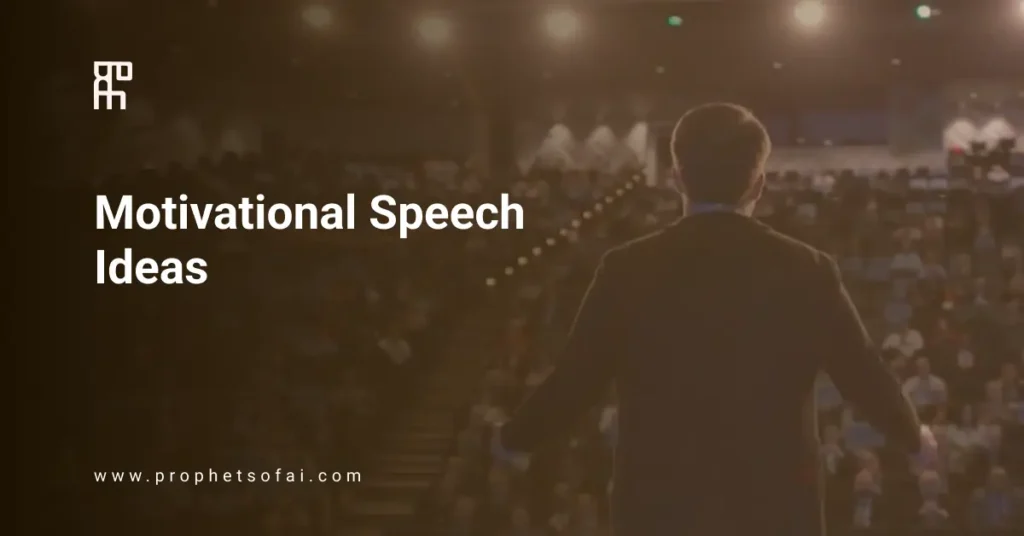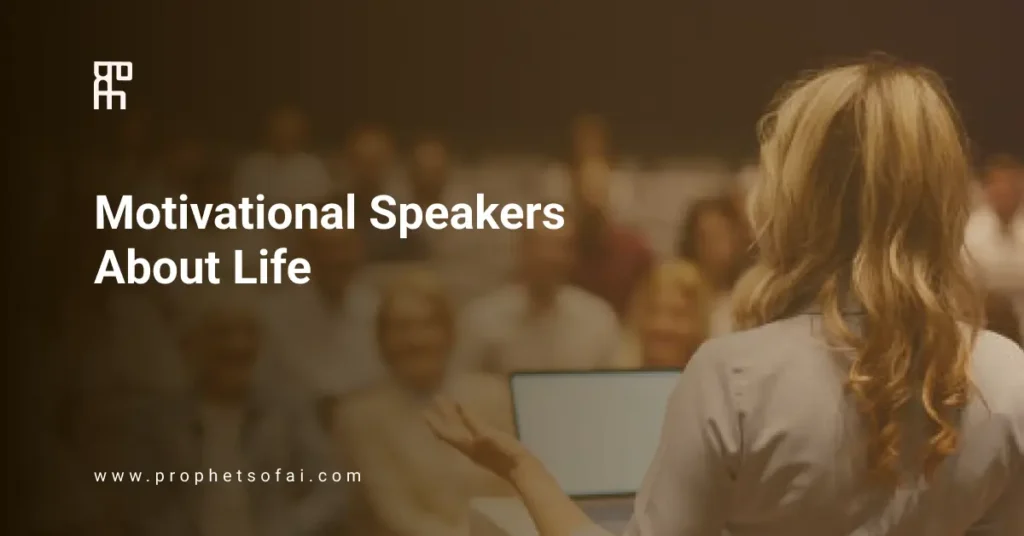Picture a high school auditorium filled with restless teenagers, half expecting another boring assembly. Then a speaker takes the stage and shares a story so raw, so relatable, that suddenly 500 students lean forward instead of checking their phones. In that moment, a struggling student realizes they’re not alone, an underachiever sees a path forward, and a quiet leader finds the courage to speak up. This is why schools invest in motivational speakers—not for feel-good assemblies that students forget by lunch, but for those breakthrough moments that genuinely shift perspectives and change trajectories. Speaking to students presents unique challenges: capturing attention in an age of infinite distractions, delivering messages that resonate across diverse backgrounds and maturity levels, and inspiring action rather than just temporary enthusiasm. This guide explores why motivational speakers matter in educational settings, the different types of speakers for various school needs, how to choose age-appropriate presenters, and how to maximize impact long after the assembly ends. Let’s start by understanding what effective speakers deliver in school environments.
Why Motivational Speakers Matter in Schools
Schools invest in speakers because the right message at the right time can profoundly impact student development and school culture.
Educational and developmental impact:
Building confidence and self-esteem: External speakers validate students’ struggles and potential in ways daily instruction can’t. They provide mirrors for students to see themselves succeeding.
Academic motivation and goal-setting: Speakers reignite curiosity about learning and help students connect current effort to future rewards, especially during testing seasons or when motivation wanes.
Social-emotional learning reinforcement: They bring SEL concepts to life through real stories, making abstract lessons about empathy, resilience, and self-awareness tangible and memorable.
Career exploration and future planning: Speakers expose students to possibilities beyond their immediate environment, expanding their vision of what’s achievable.
Mental health awareness and coping strategies: They normalize struggles with anxiety, depression, and stress while providing practical tools and encouraging help-seeking behavior.
Anti-bullying and inclusion messages: Speakers create shared language around kindness, upstander behavior, and belonging that schools can reference throughout the year.
Key moments for school speakers: Back-to-school assemblies, anti-bullying awareness weeks, college readiness programs, testing season motivation, graduation ceremonies, leadership development events, and mental health initiatives.
Why external voices work: Students often hear messages differently from outside speakers than from teachers and administrators they see daily. Fresh voices break through familiarity and routine.
Types of Motivational Speakers for Schools
Different student needs require different speaker expertise. Here’s how to match speakers to your school’s priorities.
Academic Achievement and Success Speakers
Focus on study skills, growth mindset, and overcoming academic challenges. Perfect for test prep season, underperforming schools, and academic rallies. They deliver practical strategies students can implement immediately.
Anti-Bullying and Kindness Advocates
Address empathy, inclusion, upstander behavior, and digital citizenship. Essential for middle schools, anti-bullying weeks, and behavior interventions. They provide tools to create safer, kinder school communities.
Mental Health and Wellness Speakers
Cover stress management, anxiety, depression awareness, and self-care. Critical for high schools, counseling programs, and wellness initiatives. They normalize mental health challenges and teach coping strategies.
Overcoming Adversity Speakers
Share personal struggle stories demonstrating resilience and perseverance. Effective for all grade levels, especially students facing challenges. They offer hope and proof that circumstances don’t define futures. Examples: Shaun White on overcoming physical challenges, Shannon Miller on health battles and excellence.
Career and Future Planning Speakers
Explore career options, skill development, and post-graduation pathways. Valuable for high schools, career fairs, and college prep programs. They provide practical guidance on life after graduation.
Leadership and Character Development
Focus on responsibility, integrity, positive influence, and goal-setting. Ideal for student councils, leadership programs, and honor societies. They create frameworks for becoming positive role models.
STEM and Innovation Speakers
Cover technology, creativity, problem-solving, and future careers. Perfect for STEM programs, gifted students, and innovation challenges. They generate excitement about educational pathways—exactly where Prophets of AI excels for tech-interested students. Example: Daniel Kraft, M.D. on healthcare innovation and STEM careers.
Want more guidance on speaker types? Explore our comprehensive guide on 6 types of keynote speakers and how to choose the right one.
Age-Appropriate Speaker Selection
What captivates fifth-graders will bore high school seniors. Match your speaker to developmental stages.
Elementary School (K-5)
Interactive, high-energy presentations work best. Messages should be simple: kindness, trying your best, dreaming big. Heavy use of storytelling, props, and audience participation keeps attention. Keep sessions 30-45 minutes maximum—young students can’t sustain focus longer.
Middle School (6-8)
Address identity formation, belonging, and peer pressure head-on. Anti-bullying and social media responsibility resonate deeply. Use relatable stories about navigating social challenges and finding confidence. Balance inspiration with practical advice they can use tomorrow. Sessions run 45-60 minutes effectively.
High School (9-12)
Focus on future planning, college and career preparation, mental health, and stress management. Students appreciate authentic struggle-to-success stories without sugar-coating. More sophisticated content and appropriate humor land well. Plan 60-75 minute sessions with Q&A time—older students engage deeply when given space to ask questions.
The critical lesson: one message doesn’t fit all ages. A speaker who crushes it with seniors might completely miss with sixth-graders.
How to Choose the Right Speaker for Your School
Strategic speaker selection ensures your investment creates real impact.
Align with School Goals and Initiatives
Match speakers to current priorities. Running an anti-bullying campaign? Book kindness and inclusion speakers. Focused on academic improvement? Choose achievement and growth mindset experts. Addressing mental health concerns? Prioritize wellness and coping strategy speakers. Planning college readiness programs? Select career and future planning specialists. Building character education? Bring in leadership and integrity focused presenters.
Evaluate School Speaking Experience
Verify they have testimonials from actual schools. Can they adjust content for different grade levels? Do they understand classroom management and student engagement dynamics? Are they comfortable with unfiltered Q&A from students? School experience matters—corporate speakers often struggle with student audiences.
Consider Your Student Demographics
Ensure cultural sensitivity and authentic representation. Account for socioeconomic awareness in examples and messaging. Address learning differences and accessibility needs. Consider language considerations for multilingual populations.
Check Content Appropriateness
Confirm age-appropriate language and examples. Verify topics are school-safe—avoid politics or religion unless specifically requested. Ensure messages are positive and hope-filled, not fear-based. Look for actionable takeaways students can implement immediately.
For a comprehensive evaluation framework, read our guide on how to evaluate a keynote speaker with 12 essential questions.
Budgeting for School Speakers
Understanding costs and funding sources helps you bring quality speakers within budget constraints.
Typical School Speaker Fees
- $1,000-$3,000: Local speakers, emerging professionals
- $3,000-$7,500: Regional speakers with proven school expertise
- $7,500-$15,000: National speakers with strong track records
- $15,000-$30,000+: High-profile speakers, professional athletes, celebrities
Funding Sources
Explore PTA/PTO fundraising, school district professional development budgets, grants for character education or mental health programs, community business sponsorships, Title funds for eligible programs, and student activity fees.
Cost-Saving Strategies
Book multiple sessions in one day for lower per-session costs. Share speakers with nearby schools to split expenses. Consider virtual presentations (50-70% less expensive). Book during off-season—summer planning for fall events often yields better rates.
For detailed pricing insights, explore our guide on how much keynote speakers cost.
Common Mistakes Schools Make
Avoid these pitfalls that waste budgets and miss opportunities to impact students.
Choosing based on adult appeal: What impresses administrators may bore students. Let student feedback guide decisions, not just what sounds good in staff meetings.
Ignoring age appropriateness: A speaker who excels with high schoolers might completely miss with middle schoolers. One-size-fits-all rarely works K-12.
Poor timing: Avoid Friday afternoons, days before breaks, or during testing weeks when students are mentally exhausted or distracted.
No student preparation: Cold assemblies with unknown speakers confuse students. Brief them beforehand on who’s coming and why it matters.
Skipping follow-up: Powerful messages fade within days without reinforcement through classroom discussions and activities.
Inadequate behavior management: Even the best speakers can’t overcome chaos. Set clear expectations beforehand.
Conclusion
The right motivational speaker at the right time can shift a student’s entire trajectory. Choose speakers who authentically connect with your specific student population, align with school goals, and deliver age-appropriate messages with actionable takeaways. Prepare students beforehand, reinforce messages afterward, and measure impact to justify continued investment.
Ready to inspire the next generation? Explore Prophets of AI’s roster of speakers who transform school culture and empower students to reach their full potential.






